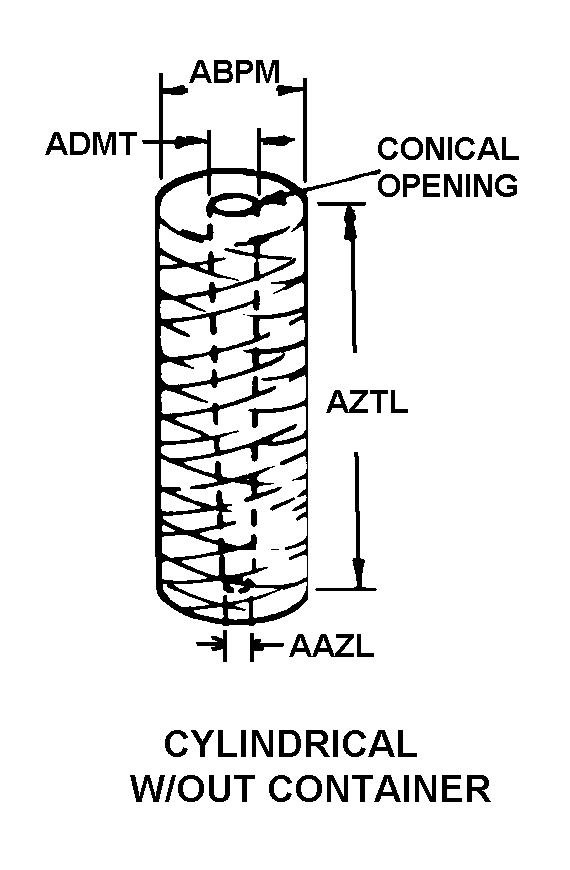2915006184209
Price Quote Get an up to date pricing and availability quote for this product. Order online or over the phone.
Quality Commitment
Serving our customers with quality and safety first.
- AS9120 Certified
- Audited supply chain
- ITAR Registered
- DDTC Registered
- HAZMAT Certified
- Customer service objectives
- Every product 100% inspected

2915-00-618-4209 Specification Set by the OEM (see RNCC code 3)
0.307 mils and 0.317 centimeters
0.187in.
40.0
outside in
reusable
-65.0 deg fahrenheit and 275.0 deg fahrenheit
1.500 in.
woven single filtering media response
base threaded, 7/16&20 unf&3a
steel corrosion resisting filtering medium
fuel/oil, hydrocarbon
cylindrical w/out container
valve assemby, fuel pressure REGULAT0R, aircraft
Cross Reference Parts Part numbers that meet the specification outlined on this page and set by the OEM
Identification Item Identification Guide (IIG) and Item Name Code (INC)


Definition Definition of approved item name (AIN): "FILTER ELEMENT,FLUID"
A replaceable device designed to remove solid particles from fluids ranging in density from heavy liquids to gases. The removal of particles is accomplished by porous material (metallic or non-metallic), stacked disks, wound wire, or the like, constructed so the fluid can flow through the device while the solid particles are retained. It may be designed to fit into a filter, fluid (or similar cavity), or it may have an integral outer casing and mounting facilities and be designed to connect directly to an engine, compressor, or the like. The degree of removal of particles must be nominally rated at less than 50 microns or absolutely rated at less than 75 microns. Excludes filter element, air conditioning. See also strainer element, sediment.
2915-00-618-4209 Material Hazmat, Precious Metals, Criticality, Enviroment, and ESD
Indicates there is no data in the hmirs and the nsn is in a fsc not generally suspected of containing hazardous materials.
Item does not contain precious metal.
Represents items with no adp components
The item does not have a nuclear hardened feature or any other critical feature such as tolerance, fit restriction or application.
Identification Codes
HMIC: Hazardous Material Indicator Code. A one position code that identifies a hazardous item.
PMIC: Precious Metal Indicator Code. A one position code which identifies items that have precious metals as part of their content. precious metals are those metals generally considered to be uncommon, highly valuable, and relatively superior in certain properties such as resistance to corrosion and electrical conductivity.
ESD: Electrostatic Discharge. Indicates if an item is susceptible to electrostatic discharge or electromagnetic interference damage. electrostatic discharge damage occurs when an accumulation of static electricity generated by the relative motion or separation of materials is released to another item by direct contact. electromagnetic interference damage occurs when an item comes into proximity with an electrostatic or magnetic field.
ENAC: Enviromental Attribute Code. Identifies items with environmentally preferred characteristics.
CRITL: Criticality Indicator Code. Indicates an item is technically critical by tolerance, fit, application, nuclear hardness properties, or other characteristics.
Material Management Material categorization and source of supply
Defense logistics agency, enterprise business systems
Material Codes
SOS: Source of Supply. A three position code or routing identifier code (ric), which identifies the source of supply activity.
SMIC: Special Material Indicator Code. A two position code, which categorizes material on the basis of requirements for source or quality control, technical design or configuration control, procurement, stocking and issue control, special receipt, inspection, testing, storage, or handling.
MMAC: Material Management Aggregation Code. A two position code that identifies an item of supply to be managed by a specific activity manager.
MCC: Material Echelon Code. A two position code employed by the marine corps in classifying items into categories by materiel category and procurement echelon. the alphanumeric management code is in the first position and identifies the materiel category
IMC: Denotes wether items shall be subjected to integrated management under the defense supply agency or retained by the individual military service or other department of defense components for their management. Assigned by th activity responsible for item management coding.






